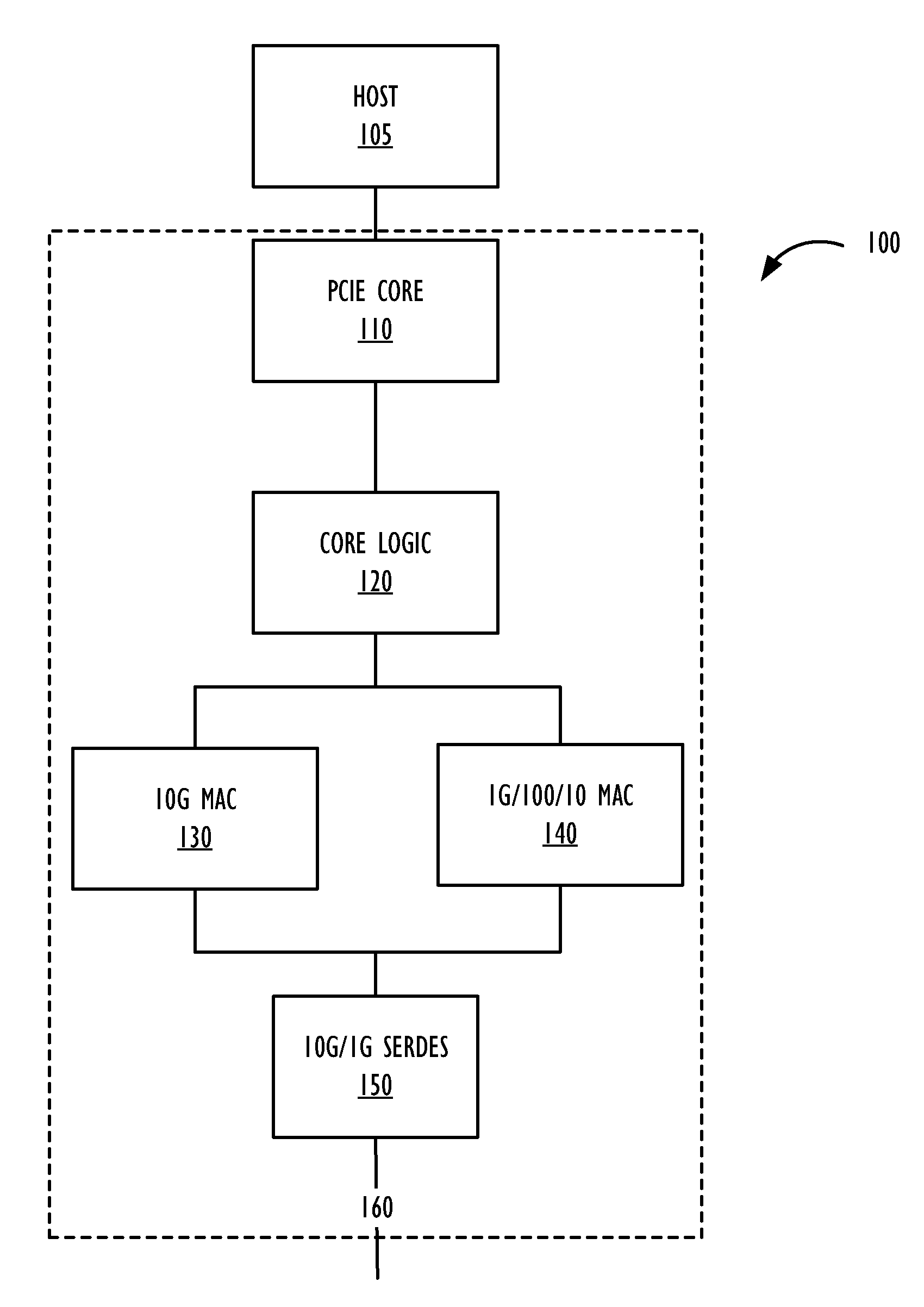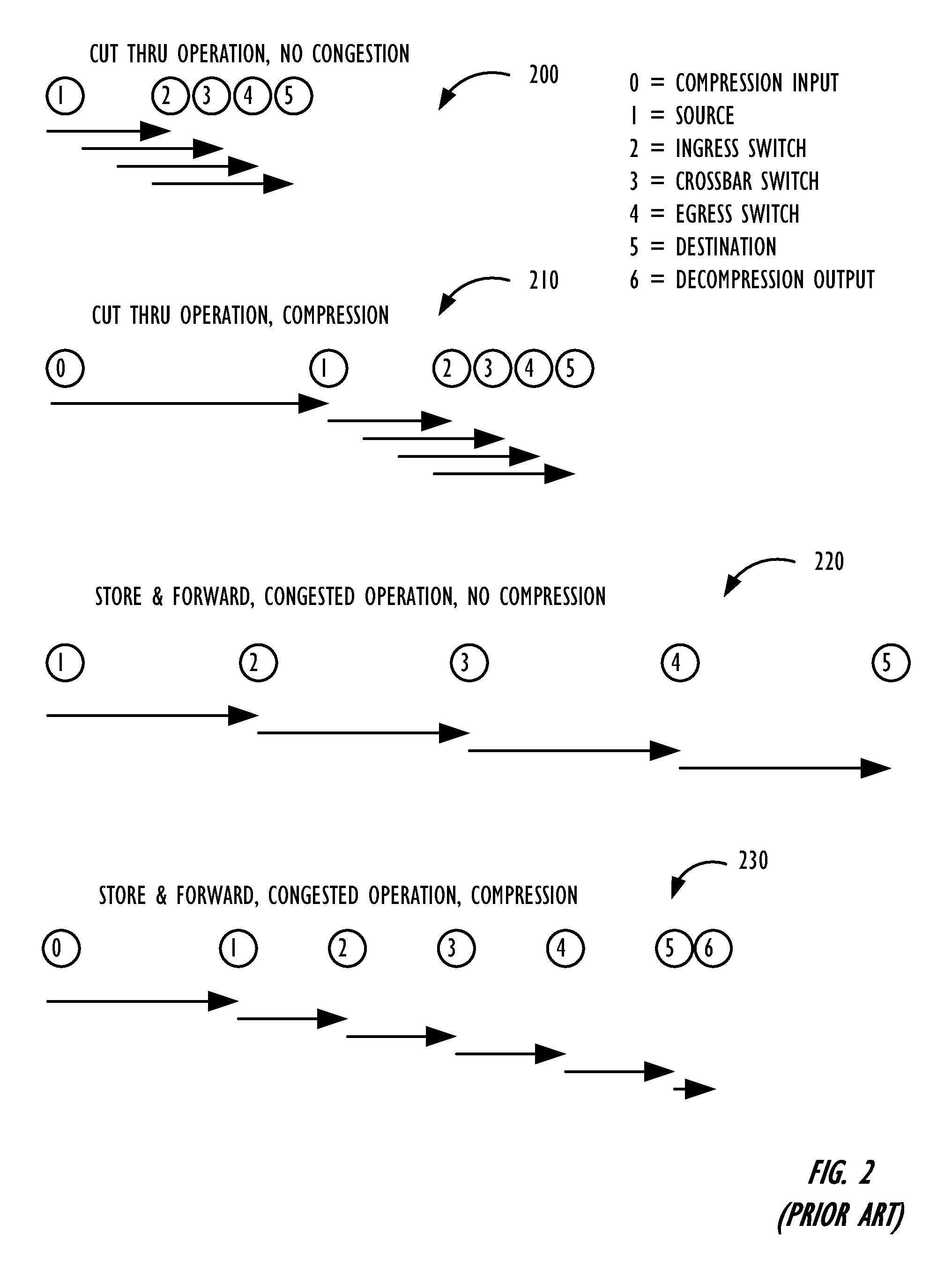Congestion-adaptive compression
a compression and compression technology, applied in the field of network work, can solve the problems of increasing latency and low end-to-end latency in congested networks
- Summary
- Abstract
- Description
- Claims
- Application Information
AI Technical Summary
Benefits of technology
Problems solved by technology
Method used
Image
Examples
example 2
[0051]a b c d a b c d a b c d
[0052]could be replaced with:
[0053]a b c d {4,8}
[0054]In this example, the length field is longer than the distance field, indicating that the pattern repeats from the start after every four bytes.
example 3
[0055]a a a a a a a a a a a a
[0056]could be replaced with: a {1,11}
example 4
[0057]a b a b a b a b a b c d
[0058]could be replaced by
[0059]a b {2,8} c d
[0060]In certain situations, a pattern may have occurred multiple times, and may have repeated in variable lengths. For example,
[0061]a b c d e f g h i d e f g h a b c d e f g h i
[0062]could be replaced by
[0063]a b c d e f g h i {6,5} {14,3} {8,5}i
[0064]or
[0065]a b c d e f g h i {6,5} {14,9}
[0066]Both solutions are correct but the second one results in better compression.
[0067]The distance and length vector typically comprises a match code word. The decompression technique finds the match codes, reads the location that is pointed to by the distance field, and then reads the number of bytes indicated by the length field. The decompression logic needs a way of identifying whether a particular byte is part of a literal (uncompressed) data, or is part of a match code word. In addition, code words can be inserted into the byte pattern to help the decompression logic determine the string boundaries. Preferably, the ...
PUM
 Login to View More
Login to View More Abstract
Description
Claims
Application Information
 Login to View More
Login to View More - R&D
- Intellectual Property
- Life Sciences
- Materials
- Tech Scout
- Unparalleled Data Quality
- Higher Quality Content
- 60% Fewer Hallucinations
Browse by: Latest US Patents, China's latest patents, Technical Efficacy Thesaurus, Application Domain, Technology Topic, Popular Technical Reports.
© 2025 PatSnap. All rights reserved.Legal|Privacy policy|Modern Slavery Act Transparency Statement|Sitemap|About US| Contact US: help@patsnap.com



